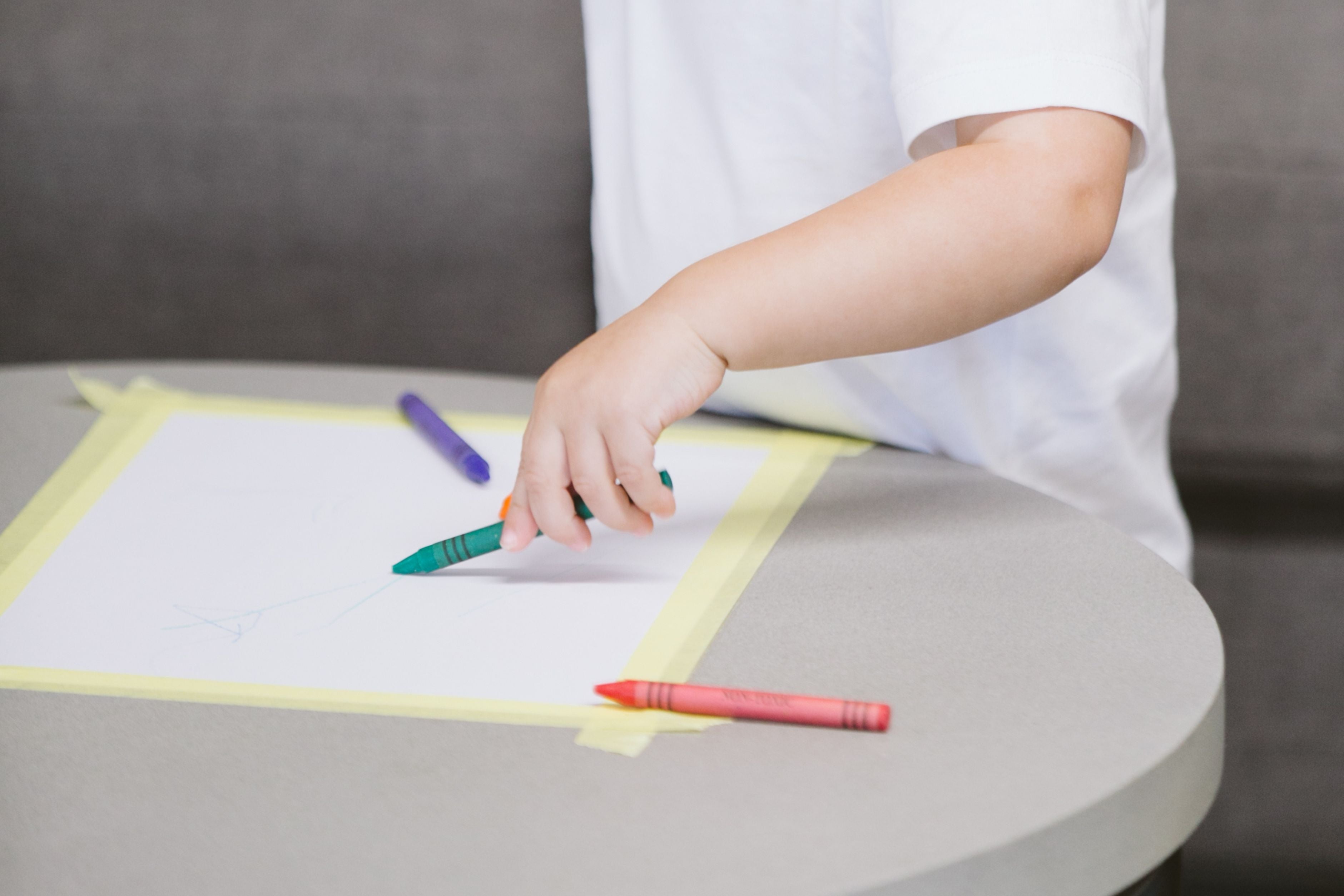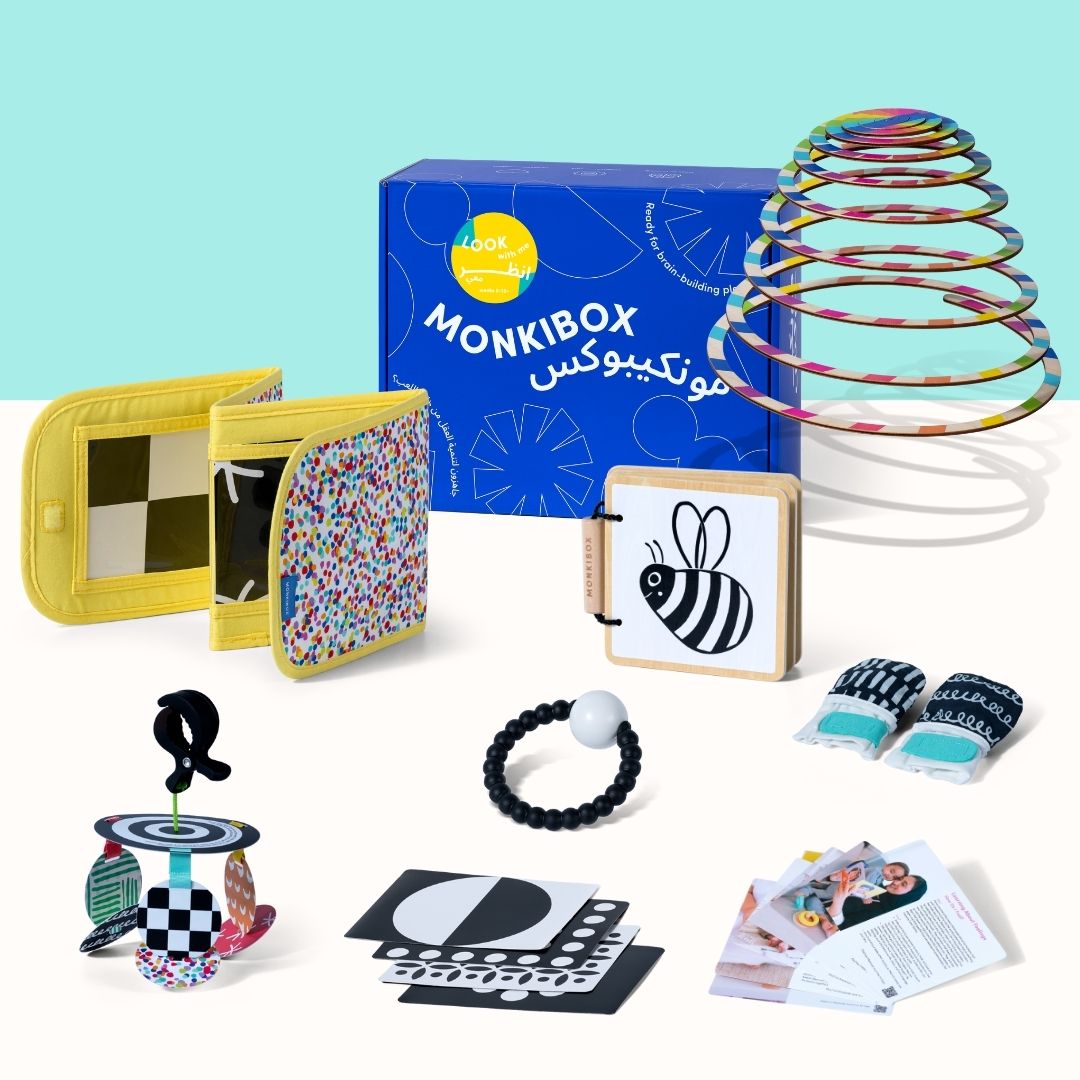الرسم ليس مجرد نشاط ممتع للأطفال الصغار؛ بل هو جزء أساسي من تنمية مهاراتهم المعرفية والحركية. مع تقدم طفلك في مراحل الرسم المختلفة، يتعلم أيضًا التعبير عن أفكاره ومشاعره بطرق جديدة. إليك نظرة على المراحل النموذجية لتطور الرسم وكيف تدعم نمو طفلك.
1. الخربشة (حوالي 18 شهرًا)
في حوالي عمر ١٨ شهرًا، يبدأ الأطفال الصغار عادةً بالرسم العفوي. قد يلتقطون قلم تلوين ويرسمون علامات عشوائية على الورق، مستمتعين بتجربة الرسم الحسية. هذه المرحلة تُركّز على العملية أكثر من المنتج، حيث يستكشف الأطفال الصغار ما يمكنهم فعله بأيديهم وأداة الرسم.
2. الخطوط العمودية (18-24 شهرًا)
بين عمر ١٨ و٢٤ شهرًا، قد يبدأ طفلكِ بتقليد خطوط عمودية بسيطة. قد يحاول رسم خط مستقيم بعد مشاهدتكِ تفعلين ذلك. تُمثل هذه المرحلة بداية حركاته المتحكمة، حيث يتعلم تنسيق عضلات يديه وذراعيه.
3. التلوين على الورق (18-24 شهرًا)
خلال نفس الفترة، يتعلم الأطفال الصغار غالبًا التلوين ضمن حدود ورقة كبيرة، خاصةً مع توجيههم للبقاء "على الورقة فقط". تتضمن هذه المرحلة تدريبًا على التحكم الدقيق في الحركة والتنسيق بين اليد والعين، حيث يتعلمون استخدام قلم التلوين أو قلم التحديد بشكل أكثر تعمدًا.
4. رسم الدوائر (20-24 شهرًا)
بين عمر ٢٠ و٢٤ شهرًا، قد يبدأ الأطفال الصغار بتقليد الخطوط الدائرية مع التشجيع والشرح. قد يحاولون رسم شكل دائري، مما يمثل خطوة مهمة في قدرتهم على التحكم في حركاتهم وتوجيهها. هذه المرحلة مؤشر مبكر على فهمهم للأشكال والأنماط.
5. الخطوط الأفقية (حوالي سنتين)
بحلول سن الثانية، قد يبدأ الأطفال الصغار بتقليد الخطوط الأفقية. باستخدام إشارات لفظية مثل "أفقيًا" أو "في هذا الاتجاه"، يمكنهم البدء باتباع التوجيهات ورسم خطوط بسيطة من اليسار إلى اليمين. تُحسّن هذه المرحلة مهاراتهم الحركية وتُعرّفهم على مفهوم الاتجاهية، وهو أمر مهم للكتابة.
6. تطوير قبضة الكماشة (23-25 شهرًا)
مع اقتراب طفلك من عمر السنتين، تتطور قبضته الشبيهة بالملقط بشكل ملحوظ، مستخدمًا الإبهام والسبابة لإمساك قلم التلوين. تتيح هذه القبضة رسمًا أكثر تحكمًا ودقة، مع أنه قد يلجأ إلى قبضة اليد لرسم علامات أثقل. يُعدّ تطوير قبضة الملقط أمرًا بالغ الأهمية لمهارات الكتابة المستقبلية.
إن فهم مراحل تطور الرسم لدى الأطفال الصغار يُساعدك على دعم نموهم المعرفي والحركي. تُمثل كل مرحلة نقطة تحول في قدرتهم على التحكم في حركاتهم، والتعبير عن أنفسهم، وفهم العالم من حولهم. شجّع طفلك على استكشاف الفنون من خلال توفير العديد من الفرص للرسم، وامتدح جهوده، مهما بدت إبداعاته بسيطة. من خلال الرسم، لا يطور طفلك مهارات مهمة فحسب، بل يكتشف أيضًا طرقًا جديدة للتواصل والتفاعل مع بيئته.





